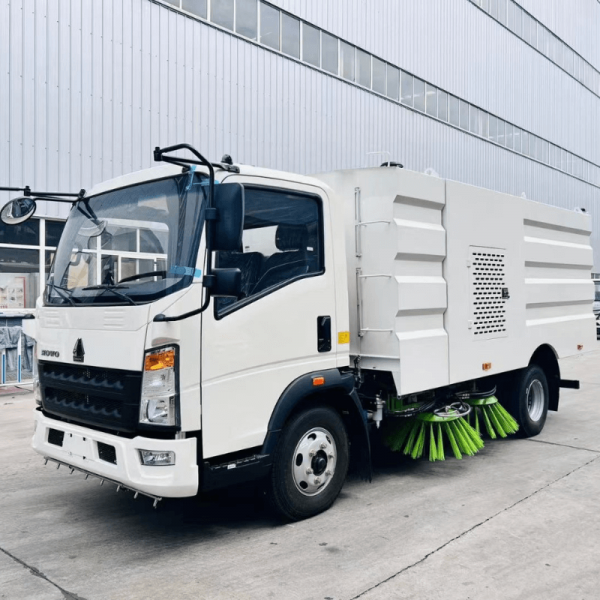The Backbone of Efficiency An In-Depth Look at Work Truck Chassis

Introduction
Work trucks are the unsung heroes of industries that rely on transportation and logistics. From construction sites to utility companies, these versatile vehicles are essential for carrying out a wide range of tasks efficiently. At the heart of every work truck lies its chassis, the structural framework that supports the vehicle's components and determines its performance capabilities. In this article, we will delve into the world of work truck chassis, exploring their different types, features, and applications.
Types of Work Truck Chassis
Work truck chassis come in various shapes and sizes, each designed to meet the specific needs of different industries. The most common types of work truck chassis include:

1. Cab and Chassis: This type of chassis consists of a cab that houses the driver and passengers, along with a frame that extends to the rear of the vehicle. The rear portion of the frame is left open, allowing for the installation of custom bodies or equipment based on the specific requirements of the user.
2. Cutaway Chassis: Cutaway chassis feature an incomplete rear section, with the cab extending over the chassis frame. These chassis are commonly used for applications that require specialized bodies, such as ambulances, shuttle buses, and delivery trucks.
3. Platform Chassis: Platform chassis are flat, open frames that provide a solid foundation for mounting various types of bodies or equipment. They are commonly used in industries such as construction, landscaping, and agriculture, where the ability to customize the truck's setup is essential.
4. Integrated Chassis: Integrated chassis feature a fully integrated design, with the cab and chassis manufactured as a single unit. LED advertising truck customized campaigns are often used in heavy-duty applications that require high levels of structural integrity and durability, such as dump trucks, concrete mixers, and heavy-haul transporters.
Features of Work Truck Chassis
Work truck chassis are designed to withstand the rigors of daily use in demanding environments. To meet these requirements, manufacturers incorporate various features into the design of work truck chassis, including:
1. Frame Construction: The frame is the backbone of the chassis, providing structural support and stability for the entire vehicle. Work truck chassis frames are typically made of high-strength steel or aluminum, chosen for their durability and resistance to bending and twisting forces.
2. Fuel tank truck emergency procedures : The suspension system plays a crucial role in providing a smooth and stable ride for the vehicle and its occupants. Work truck chassis are equipped with robust suspension systems that can handle heavy loads and rough terrain, ensuring optimal performance in challenging conditions.
3. Braking System: The braking system is essential for ensuring the safety of the vehicle and its cargo. Work truck chassis are equipped with advanced braking systems that include features such as anti-lock brakes (ABS), electronic stability control (ESC), and brake assist, providing reliable stopping power in all situations.
4. Powertrain Options: Work truck chassis are available with a range of powertrain options to suit different performance requirements. These can include gasoline, diesel, or alternative fuel engines, along with various transmission configurations such as manual, automatic, or automated manual transmissions (AMTs).
Applications of Work Truck Chassis
Work truck chassis find applications across a wide range of industries, where they serve as the backbone of transportation and logistics operations. Some common applications of work truck chassis include:
1. Construction: Work truck chassis are widely used in the construction industry for transporting materials, equipment, and personnel to and from job sites. They are often equipped with specialized bodies such as flatbeds, dump bodies, or crane attachments to support various construction tasks.
2. Utilities: Utility companies rely on work truck chassis to maintain and repair infrastructure such as power lines, water mains, and telecommunications networks. These vehicles are equipped with specialized bodies and equipment, such as bucket lifts, digger derricks, and cable reels, to facilitate efficient field operations.
3. Landscaping: Work truck chassis are essential for landscaping businesses that require vehicles to transport tools, equipment, and supplies to customer locations. LED advertising truck customized campaigns are often fitted with bodies such as stake beds, dump bodies, or enclosed vans to carry landscaping materials and machinery.
4. Emergency Services: Work truck chassis play a vital role in emergency services, providing vehicles for police, fire, and ambulance departments. These vehicles are customized with specialized bodies and equipment to support rapid response and rescue operations in critical situations.
Conclusion
Work truck chassis are the unsung heroes of industries that rely on transportation and logistics. These versatile vehicles provide the structural foundation for a wide range of applications, from construction and utilities to landscaping and emergency services. By understanding the different types, features, and applications of work truck chassis, businesses and organizations can make informed decisions when selecting vehicles to meet their specific needs. In an ever-evolving world of transportation and logistics, work truck chassis remain the backbone of efficiency and productivity.
